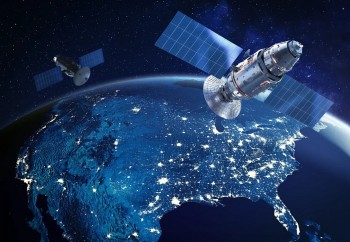What Is Kosmos 482? Soviet Spacecraft Stuck in Orbit for 53 Years May Finally Fall Back to Earth
 What is the Cold War: Causes, Purpose and Will There be More World War? What is the Cold War: Causes, Purpose and Will There be More World War? |
A Cold War-era ghost in the sky may soon make its final move. Kosmos 482, a forgotten spacecraft launched by the Soviet Union in 1972, is still circling our planet. For over half a century, it’s silently drifted in orbit—a malfunctioned probe with a secret history. Now, scientists believe its long fall back to Earth is imminent.
So what exactly is Kosmos 482? Why is it still up there? Where will it land? And could it survive the brutal descent? Here’s the full story behind one of the strangest relics of the space race.
 |
| Kosmos 482 could crash land on Earth this year |
A Soviet Mission That Never Reached Venus
Kosmos 482 was launched on March 31, 1972, just four days after its twin probe Venera 8. Both were part of the USSR’s Venera program, designed to send landers to Venus, Earth’s nearest planetary neighbor and one of the most inhospitable places in the solar system. While Venera 8 made it to Venus and transmitted data for 50 minutes, Kosmos 482 wasn’t so lucky.
A failure during the upper-stage rocket separation left the spacecraft trapped in low Earth orbit (LEO). Rather than admitting the mission’s failure, Soviet authorities reclassified the spacecraft as “Kosmos 482,” burying its true objective under the generic “Kosmos” label—used for hundreds of satellites, many of them secret military or failed interplanetary missions.
Read more: Former Soviet Union (USSR): What Happened to the 15 Republics Today
Why the Name "Kosmos"?
During the Cold War, transparency wasn’t a Soviet strength. The USSR routinely masked botched interplanetary missions by assigning them the "Kosmos" title—effectively saying, “It’s just another Earth satellite.”
This naming convention allowed the Soviet space agency to avoid public embarrassment and confuse foreign intelligence analysts. Kosmos 482, in reality, was a Venus-bound lander, repurposed—at least in name—as a generic object in Earth orbit.
A Spacecraft Built to Survive Hell
What makes Kosmos 482 particularly fascinating is how it was built. This wasn’t an ordinary satellite. Its lander capsule was engineered to endure a descent through Venus’ atmosphere, where temperatures reach 470°C (880°F) and surface pressure is over 90 times that of Earth. To survive, it was encased in titanium alloy, with a thick heat shield and heavy insulation.
That means parts of Kosmos 482—particularly the lander—are likely still intact. It was built to survive more extreme conditions than Earth’s re-entry environment, making it one of the few human-made objects in orbit that could hit the ground nearly whole.
In fact, in 1981, fragments believed to be from Kosmos 482 crashed in New Zealand, including spherical metal balls that were part of its pressurized tanks—further evidence of its rugged build.
When and Where Will It Re-enter?
Predicting re-entry is tricky business. Space debris doesn’t come down on a schedule, and orbital decay depends on many variables, including solar activity, atmospheric drag, and the object's current orbit.
Experts currently estimate that Kosmos 482 could re-enter between 2025 and 2027. After decades in orbit, Kosmos 482 is expected to re-enter Earth's atmosphere next week, according to updated satellite tracking reports. This sudden development has renewed interest in the spacecraft’s mysterious past—and raised questions about where exactly it might fall.
Its orbit is highly elliptical, with a perigee low enough to skim the atmosphere and gradually slow down. But until re-entry is only hours away, no one can say where it will land. Possibilities range from uninhabited ocean regions to populated areas. Fortunately, the risk to life is extremely low—but not zero.
Could Kosmos 482 Survive Re-entry?
The titanium capsule aboard Kosmos 482 may not only survive re-entry—it could crash-land with considerable force. Unlike typical satellites that burn up in Earth’s atmosphere, this component was meant to land on Venus in one piece. That makes it one of the most resilient pieces of space engineering still in orbit today.
If it does survive, it would be the only known Venus lander to return to Earth, albeit unintentionally. The irony isn’t lost on space historians.
What Secrets Might It Hold?
Kosmos 482 isn’t just space junk—it’s a sealed Cold War time capsule. Some researchers believe it may contain Soviet avionics, thermal protection systems, and possibly radioactive power sources like polonium-210, which was used in early spacecraft.
Though any radioactive components are likely shielded and pose minimal danger, the idea of a 1970s Soviet device—untouched and unopened—falling to Earth is tantalizing. If recovered, it could offer rare insights into the Soviet space program’s engineering and design philosophies.
A Reminder of a Bygone Space Era
Kosmos 482 is more than space debris. It’s a silent symbol of Cold War ambition, secrecy, and engineering excellence. It never made it to Venus, but it outlasted many missions that did. It has orbited Earth over 280,000 times, a ghost from a different age still tethered to our planet.
When it finally comes down, Kosmos 482 will make headlines again—not as a threat, but as a legend re-entering the atmosphere. Its story is a cosmic footnote that refuses to be forgotten.
Final Thoughts
Kosmos 482 began as a bold attempt to conquer Venus. It failed that mission but became something else entirely: a long-lost artifact of human exploration, now preparing for a dramatic final act. Whether it burns up or crashes down, its journey is a powerful reminder that in space, even failures can leave a lasting mark.
 Top 10 Well-Known Soviet Spies Operating Within the United States Top 10 Well-Known Soviet Spies Operating Within the United States Do you know any Soviet spy working in the US? There are lots of unknown stories about them. |
 TJS-16 and TJS-17: China’s Shadow Satellites Intensify a New Space Race With the US TJS-16 and TJS-17: China’s Shadow Satellites Intensify a New Space Race With the US China’s latest satellite launches — TJS-16 on March 29 and TJS-17 on April 10, 2025 — have sparked international concern, particularly in the United States. |























